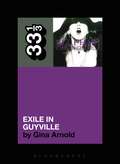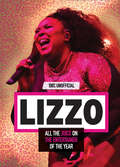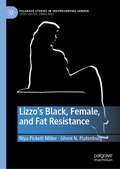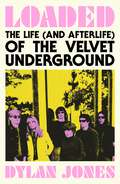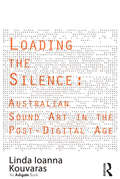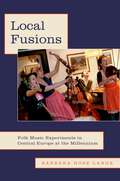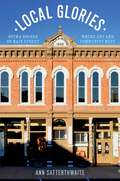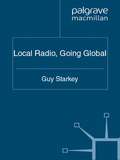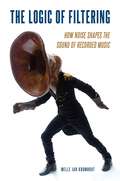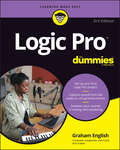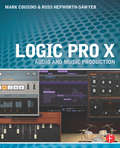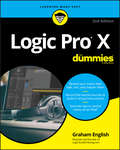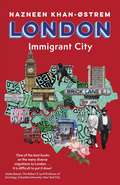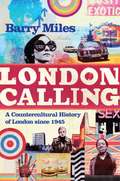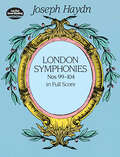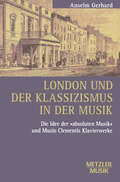- Table View
- List View
Liz Phair's Exile in Guyville (33 1/3)
by Gina ArnoldAlthough Exile in Guyville was celebrated as one of the year's top records by Spin and the New York Times, it was also, to some, an abomination: a mockery of the Rolling Stones' most revered record and a rare glimpse into the psyche of a shrewd, independent, strong young woman. For these crimes, Liz Phair was run out of her hometown of Chicago, enduring a flame war perpetrated by writers who accused her of being boring, inauthentic, and even a poor musician. With Exile in Guyville, Phair spoke for all the girls who loved the world of indie rock but felt deeply unwelcome there. Like all great works of art, Exile was a harbinger of the shape of things to come: Phair may have undermined the male ego, but she also unleashed a new female one. For the sake of all the female artists who have benefited from her work-from Sleater-Kinney to Lana Del Rey and back again-it's high time we go back to Guyville.
Liz Phair's Exile in Guyville (33 1/3)
by Gina ArnoldAlthough Exile in Guyville was celebrated as one of the year's top records by Spin and the New York Times, it was also, to some, an abomination: a mockery of the Rolling Stones' most revered record and a rare glimpse into the psyche of a shrewd, independent, strong young woman. For these crimes, Liz Phair was run out of her hometown of Chicago, enduring a flame war perpetrated by writers who accused her of being boring, inauthentic, and even a poor musician. With Exile in Guyville, Phair spoke for all the girls who loved the world of indie rock but felt deeply unwelcome there. Like all great works of art, Exile was a harbinger of the shape of things to come: Phair may have undermined the male ego, but she also unleashed a new female one. For the sake of all the female artists who have benefited from her work-from Sleater-Kinney to Lana Del Rey and back again-it's high time we go back to Guyville.
Lizzo: 100% Unofficial – All the Juice on the Entertainer of the Year
by Natasha MulengaLizzo is the flute-playing, fiercely positive, entertainer of the decade!
Lizzo’s Black, Female, and Fat Resistance (Palgrave Studies in (Re)Presenting Gender)
by Niya Pickett Miller Gheni N. PlatenburgCelebrated musician and entertainer Lizzo wowed audiences and left many “feeling good as hell.” Notwithstanding her collective—fat, Black female— identity she catapulted into mainstream success while redefining the social script for body size, race, and gender. This book explores a tale of two narratives: Lizzo’s self-curated, fat-positive identity and the media’s reaction to an unabashedly proud fat, Black woman. This critical analysis examines how Lizzo challenges fatphobia and reconstitutes fat stigmatization into self-empowerment through her strategic use of hyper-embodiment via social media, and the rhetorical distinctions between Lizzo’s self-curated narrative via social media and those offered about her in print media. In part, Lizzo’s bodily flaunting is argued as a significant rhetorical act that emancipates her identity of fatness and reframes the negative tropes of (fat) Black women typically curated in American culture.
Loaded: The Life (and Afterlife) of The Velvet Underground
by Dylan JonesRebellion always starts somewhere, and in the music world of the transgressive teen whether it be the 1960s of the 2020s, The Velvet Underground represent ground zero. Crystallizing the idea of the bohemian, urban, narcissistic art school gang, around a psychedelic rock and roll band - a stylistic idea that evolved in the rarefied environs of Andy Warhol's Factory - The Velvets were the first major American rock group with a mixed gender line-up; they never smiled in photographs, wore sunglasses indoors, and in the process invented the archetype. They were avant-garde nihilists, writing about drug abuse, prostitution, paranoia, and sado-masochistic sex at a time when the rest of the world was singing about peace and love. Dylan Jones' definitive oral history of The Velvet Underground draws on contributions from remaining members, contemporaneous musicians, critics, film-makers, and the generation of artists who emerged in their wake, to celebrate not only their impact but their legacy, which burns brighter than ever into the 21st century.
Loading the Silence: Australian Sound Art in the Post-Digital Age
by Linda Ioanna KouvarasThe experimentalist phenomenon of 'noise' as constituting 'art' in much twentieth-century music (paradoxically) reached its zenith in Cage’s (’silent’ piece) 4’33 . But much post-1970s musical endeavour with an experimentalist telos, collectively known as 'sound art', has displayed a postmodern need to ’load’ modernism’s ’degree zero’. After contextualizing experimentalism from its inception in the early twentieth century, Dr Linda Kouvaras’s Loading the Silence: Australian Sound Art in the Post-Digital Age explores the ways in which selected sound art works demonstrate creatively how sound is embedded within local, national, gendered and historical environments. Taking Australian music as its primary - but not sole - focus, the book not only covers discussions of technological advancement, but also engages with aesthetic standpoints, through numerous interviews, theoretical developments, analysis and cultural milieux for a contemporary Australian, and wider postmodern, context. Developing new methodologies for synergies between musicology and cultural studies, the book uncovers a new post-postmodern aesthetic trajectory, which Kouvaras locates as developing over the past two decades - the altermodern. Australian sound art is here put firmly on the map of international debates about contemporary music, providing a standard reference and valuable resource for practitioners in the artform, music critics, scholars and educators.
Loading the Silence: Australian Sound Art in the Post-Digital Age
by Linda Ioanna KouvarasThe experimentalist phenomenon of 'noise' as constituting 'art' in much twentieth-century music (paradoxically) reached its zenith in Cage’s (’silent’ piece) 4’33 . But much post-1970s musical endeavour with an experimentalist telos, collectively known as 'sound art', has displayed a postmodern need to ’load’ modernism’s ’degree zero’. After contextualizing experimentalism from its inception in the early twentieth century, Dr Linda Kouvaras’s Loading the Silence: Australian Sound Art in the Post-Digital Age explores the ways in which selected sound art works demonstrate creatively how sound is embedded within local, national, gendered and historical environments. Taking Australian music as its primary - but not sole - focus, the book not only covers discussions of technological advancement, but also engages with aesthetic standpoints, through numerous interviews, theoretical developments, analysis and cultural milieux for a contemporary Australian, and wider postmodern, context. Developing new methodologies for synergies between musicology and cultural studies, the book uncovers a new post-postmodern aesthetic trajectory, which Kouvaras locates as developing over the past two decades - the altermodern. Australian sound art is here put firmly on the map of international debates about contemporary music, providing a standard reference and valuable resource for practitioners in the artform, music critics, scholars and educators.
Local Fusions: Folk Music Experiments in Central Europe at the Millennium
by Barbara Rose LangeIn Local Fusions, author Barbara Rose Lange explores musical life in Hungary, Slovakia, and Austria between the end of the Cold War and the world financial crisis of 2008. With case studies from Budapest, Bratislava, and Vienna, the book looks at the ways that artists generated social commentary and tried new ways of working together as the political and economic atmosphere shifted during this time. Drawn from a variety of sources, the case studies illustrate how young musicians redefined a Central European history of elevating the arts by fusing poetry, local folk music, and other vernacular music with jazz, Asian music, art music, and electronic dance music. Their projects rejected exclusion based on ethnic background or gender prevalent in Central Europe's present far-right political movements, and instead embraced diverse modes of expression. Through this, the musicians asserted woman power, broadened masculinities, and declared affinity with regional minorities such as the Romani people.
LOCAL FUSIONS C: Folk Music Experiments in Central Europe at the Millennium
by Barbara Rose LangeIn Local Fusions, author Barbara Rose Lange explores musical life in Hungary, Slovakia, and Austria between the end of the Cold War and the world financial crisis of 2008. With case studies from Budapest, Bratislava, and Vienna, the book looks at the ways that artists generated social commentary and tried new ways of working together as the political and economic atmosphere shifted during this time. Drawn from a variety of sources, the case studies illustrate how young musicians redefined a Central European history of elevating the arts by fusing poetry, local folk music, and other vernacular music with jazz, Asian music, art music, and electronic dance music. Their projects rejected exclusion based on ethnic background or gender prevalent in Central Europe's present far-right political movements, and instead embraced diverse modes of expression. Through this, the musicians asserted woman power, broadened masculinities, and declared affinity with regional minorities such as the Romani people.
Local Glories: Opera Houses on Main Street, Where Art and Community Meet
by Ann SatterthwaiteTo most people, the term "opera house" conjures up images of mink-coated dowagers accompanied by tuxedo-clad men in the gilded interiors of opulent buildings like the Met in New York or La Scala in Milan. However, the opera house in the United States has a far more varied-and far more interesting-history than that stereotype implies. In Local Glories, Ann Satterthwaite explores the creative, social, and communal roles of the thousands of opera houses that flourished in small towns across the country. By 1900, opera houses were everywhere: on second floors over hardware stores, in grand independent buildings, in the back rooms of New England town halls, and even in the bowels of a Mississippi department store. With travel made easier by the newly expanded rail lines, Sarah Bernhardt, Mark Twain, and John Philip Sousa entertained thousands of townspeople, as did countless actors, theater and opera companies, innumerable minor league magicians, circuses, and lecturers, and even 500 troupes that performed nothing but Uncle Tom's Cabin. Often the town's only large space for public assembly, the local opera house served as a place for local activities such as school graduations, recitations, sports, town meetings, elections, political rallies, and even social dances and roller skating parties. Considered local landmarks, often in distinctive architect-designed buildings, they aroused considerable pride and reinforced town identity. By considering states with distinctly different histories--principally Maine, Nebraska, Vermont, New York, and Colorado--Satterthwaite describes the diversity of opera houses, programs, audiences, buildings, promoters, and supporters--and their hopes, dreams, and ambitions. In the twentieth century, radio and movies, and later television and changing tastes made these opera houses seem obsolete. Some were demolished, while others languished for decades until stalwart revivers discovered them again in the 1970s. The resuscitation of these opera houses today, an example of historic preservation and creative reuse, reflects the timeless quest for cultural inspiration and for local engagement to counter the anonymity of the larger world. These "local glories" are where art and community meet, forging connections and making communities today, just as they did in the nineteenth century.
Local Glories: Opera Houses on Main Street, Where Art and Community Meet
by Ann SatterthwaiteTo most people, the term "opera house" conjures up images of mink-coated dowagers accompanied by tuxedo-clad men in the gilded interiors of opulent buildings like the Met in New York or La Scala in Milan. However, the opera house in the United States has a far more varied-and far more interesting-history than that stereotype implies. In Local Glories, Ann Satterthwaite explores the creative, social, and communal roles of the thousands of opera houses that flourished in small towns across the country. By 1900, opera houses were everywhere: on second floors over hardware stores, in grand independent buildings, in the back rooms of New England town halls, and even in the bowels of a Mississippi department store. With travel made easier by the newly expanded rail lines, Sarah Bernhardt, Mark Twain, and John Philip Sousa entertained thousands of townspeople, as did countless actors, theater and opera companies, innumerable minor league magicians, circuses, and lecturers, and even 500 troupes that performed nothing but Uncle Tom's Cabin. Often the town's only large space for public assembly, the local opera house served as a place for local activities such as school graduations, recitations, sports, town meetings, elections, political rallies, and even social dances and roller skating parties. Considered local landmarks, often in distinctive architect-designed buildings, they aroused considerable pride and reinforced town identity. By considering states with distinctly different histories--principally Maine, Nebraska, Vermont, New York, and Colorado--Satterthwaite describes the diversity of opera houses, programs, audiences, buildings, promoters, and supporters--and their hopes, dreams, and ambitions. In the twentieth century, radio and movies, and later television and changing tastes made these opera houses seem obsolete. Some were demolished, while others languished for decades until stalwart revivers discovered them again in the 1970s. The resuscitation of these opera houses today, an example of historic preservation and creative reuse, reflects the timeless quest for cultural inspiration and for local engagement to counter the anonymity of the larger world. These "local glories" are where art and community meet, forging connections and making communities today, just as they did in the nineteenth century.
Local Radio, Going Global
by Guy StarkeyAn examination of the development of local radio broadcasting and the trend for locally-owned, locally-originated and locally-accountable commercial radio stations to fall into the hands of national and international media groups. Starkey traces the early development of local radio through to present-day digital environments.
The Logic of Filtering: How Noise Shapes the Sound of Recorded Music
by Melle Jan KromhoutThe Logic of Filtering traces the profound impact of technical media on the sound of music, asking: how do media technologies shape sound? How does this affect music? And how did it change what we listen for in music? Since the invention of sound recording in the second half of the nineteenth century, media that transmit, record, store, and reproduce physical sound inspired dreams of perfect reproduction, but were also confronted with the inevitable introduction of noise. Based on a wide range of historical, technical and theoretical sources, author Melle Jan Kromhout explores this one hundred and forty-year history of sound media and shows why noise should not be understood as unwanted by-effect, but instead plays a foundational role in shaping the sonic contours of recorded music. The Logic of Filtering develops an extensive media archaeological analysis of the 'noise of sound media,' encompassing all the disturbances, distortions, and interferences that these media add to the sounds they reproduce. It thereby stands to enrich our understanding of the way in which sound media changed and continue to change the sonorous qualities of music, and offers new perspectives on the interaction between music, media and listeners.
The Logic of Filtering: How Noise Shapes the Sound of Recorded Music
by Melle Jan KromhoutThe Logic of Filtering traces the profound impact of technical media on the sound of music, asking: how do media technologies shape sound? How does this affect music? And how did it change what we listen for in music? Since the invention of sound recording in the second half of the nineteenth century, media that transmit, record, store, and reproduce physical sound inspired dreams of perfect reproduction, but were also confronted with the inevitable introduction of noise. Based on a wide range of historical, technical and theoretical sources, author Melle Jan Kromhout explores this one hundred and forty-year history of sound media and shows why noise should not be understood as unwanted by-effect, but instead plays a foundational role in shaping the sonic contours of recorded music. The Logic of Filtering develops an extensive media archaeological analysis of the 'noise of sound media,' encompassing all the disturbances, distortions, and interferences that these media add to the sounds they reproduce. It thereby stands to enrich our understanding of the way in which sound media changed and continue to change the sonorous qualities of music, and offers new perspectives on the interaction between music, media and listeners.
Logic Pro For Dummies
by Graham EnglishThis one-stop source for Logic Pro insight helps you spend more time creating music Every minute you spend trying to figure out how to set up a new track or build a drum loop is a minute you don’t spend creating and recording your music. This guide to the recording software favored by Mac users helps you bypass the time needed to search for tech answers and spend more time capturing sounds. Discover the full recording power of Logic Pro, starting with launching a project and recording your audio. Explore the built-in digital instruments and beat makers, augment your recording power with plug-ins, and finalize your song by editing, adding effects, mixing, mastering, and sharing. The final step is music stardom! Learn your way around the Logic Pro interface and understand the workflow Set up your project and add tracks and regions Record acoustic audio or conduct your orchestra of MIDI instruments Edit, mix, automate, export, and feel proud of your audio filesFor beginning music creators and producers, this Dummies guide makes it simple to get started with Logic Pro.
Logic Pro For Dummies
by Graham EnglishThis one-stop source for Logic Pro insight helps you spend more time creating music Every minute you spend trying to figure out how to set up a new track or build a drum loop is a minute you don’t spend creating and recording your music. This guide to the recording software favored by Mac users helps you bypass the time needed to search for tech answers and spend more time capturing sounds. Discover the full recording power of Logic Pro, starting with launching a project and recording your audio. Explore the built-in digital instruments and beat makers, augment your recording power with plug-ins, and finalize your song by editing, adding effects, mixing, mastering, and sharing. The final step is music stardom! Learn your way around the Logic Pro interface and understand the workflow Set up your project and add tracks and regions Record acoustic audio or conduct your orchestra of MIDI instruments Edit, mix, automate, export, and feel proud of your audio filesFor beginning music creators and producers, this Dummies guide makes it simple to get started with Logic Pro.
Logic Pro X: Audio and Music Production
by Mark Cousins Russ Hepworth-SawyerFrom initial demos to mixing and mastering, seasoned authors Mark Cousins and Russ Hepworth-Sawyer show you how to get the most from Logic Pro X. By exploring the essential workflow and the creative possibilities offered by Logic’s virtual instruments and effects, Logic Pro X: Audio and Music Production leads you through the music creation and production process, giving you all the tips and tricks used by the pros to create release-quality recordings. Using full color screenshots throughout, alongside related boxouts that expand on the key concepts, Logic Pro X: Audio and Music Production is an informative and easy-to-read guide to using Logic Pro X. Key features include: Production FAQs – Instructional Walkthroughs and Knowledgebases present information clearly and answer common production–specific problems. Methods – Professional techniques for recording and editing in Logic Pro X – whether you’re dealing with real musicians or cutting-edge virtual instruments. Workflow – Use Logic Pro X’s tools and functions in an optimal way. Website – Access audio examples, samples (Apple Loops), Logic projects, sampler instruments, and instrument patches at www.focalpress.com/cw/cousins Logic Pro X: Audio and Music Production covers more than just the software; it will help you make the most out of every recording session and will illuminate and inspire your creative and sonic endeavors!
Logic Pro X: Audio and Music Production
by Mark Cousins Russ Hepworth-SawyerFrom initial demos to mixing and mastering, seasoned authors Mark Cousins and Russ Hepworth-Sawyer show you how to get the most from Logic Pro X. By exploring the essential workflow and the creative possibilities offered by Logic’s virtual instruments and effects, Logic Pro X: Audio and Music Production leads you through the music creation and production process, giving you all the tips and tricks used by the pros to create release-quality recordings. Using full color screenshots throughout, alongside related boxouts that expand on the key concepts, Logic Pro X: Audio and Music Production is an informative and easy-to-read guide to using Logic Pro X. Key features include: Production FAQs – Instructional Walkthroughs and Knowledgebases present information clearly and answer common production–specific problems. Methods – Professional techniques for recording and editing in Logic Pro X – whether you’re dealing with real musicians or cutting-edge virtual instruments. Workflow – Use Logic Pro X’s tools and functions in an optimal way. Website – Access audio examples, samples (Apple Loops), Logic projects, sampler instruments, and instrument patches at www.focalpress.com/cw/cousins Logic Pro X: Audio and Music Production covers more than just the software; it will help you make the most out of every recording session and will illuminate and inspire your creative and sonic endeavors!
Logic Pro X For Dummies
by Graham EnglishSpend less time learning and more time recording Logic Pro X offers Mac users the tools and power they need to create recordings ready to share with the world. This book provides the know-how for navigating the interface, tweaking the settings, picking the sounds, and all the other tech tasks that get in the way of capturing the perfect take. Written by a Logic Pro X trainer who’s used the software to further his own music career, Logic Pro X For Dummies cuts back on the time needed to learn the software and allows for more time making amazing recordings. Record live sound sources or built-in virtual instruments Arrange your tracks to edit, mix, and master Discover tips to speed the process and record on an iPad Make sense of the latest software updates A favorite among Logic Pro X beginners, this book is updated to reflect the ongoing changes added to enhance Logic Pro X’s recording power.
Logic Pro X For Dummies
by Graham EnglishSpend less time learning and more time recording Logic Pro X offers Mac users the tools and power they need to create recordings ready to share with the world. This book provides the know-how for navigating the interface, tweaking the settings, picking the sounds, and all the other tech tasks that get in the way of capturing the perfect take. Written by a Logic Pro X trainer who’s used the software to further his own music career, Logic Pro X For Dummies cuts back on the time needed to learn the software and allows for more time making amazing recordings. Record live sound sources or built-in virtual instruments Arrange your tracks to edit, mix, and master Discover tips to speed the process and record on an iPad Make sense of the latest software updates A favorite among Logic Pro X beginners, this book is updated to reflect the ongoing changes added to enhance Logic Pro X’s recording power.
London: Immigrant City
by Nazneen Khan-ØstremTRANSLATED BY ALISON McCULLOUGH'One of the best books on the many diverse migrations to London . . . revealing the extent to which the diversity of immigrant origins has had transformative effects - through food, music, diverse types of knowledge and so much more. The book is difficult to put it down'Saskia Sassen, The Robert S. Lynd Professor of Sociology, Columbia University, New York'The ultimate book about Great Britain's capital'Dagbladet'One of the best books of the year! . . . This is a book about what a city is and can be'AftenpostenIs there a street in London which does not contain a story from the Empire? Immigrants made London; and they keep remaking it in a thousand different ways. Nazneen Khan-Østrem has drawn a wonderful new map of a city that everyone thought they already knew. She travels around the city, meeting the very people who have created a truly unique metropolis, and shows how London's incredible development is directly attributable to the many different groups of immigrants who arrived after the Second World War, in part due to the Nationality Act of 1948. Her book reveals the historical, cultural and political changes within those communities which have fundamentally transformed the city, and which have rarely been considered alongside each other.Nazneen Khan-Østrem has a cosmopolitan background herself, being a British, Muslim, Asian woman, born in Nairobi and raised in the UK and Norway, which has helped her in unravelling the city's rich immigrant history and its constant ongoing evolution.Drawing on London's rich literature and its musical heritage, she has created an intricate portrait of a strikingly multi-faceted metropolis. Based on extensive research, particularly into aspects not generally covered in the wide array of existing books on the city, London manages to capture the city's enticing complexity and its ruthless vitality.This celebration of London's diverse immigrant communities is timely in the light of the societal fault lines exposed by the Covid-19 pandemic and Brexit. It is a sensitive and insightful book that has a great deal to say to Londoners as well as to Britain as a whole.
London Calling: A Countercultural History of London since 1945
by Barry MilesLondon has long been a magnet for aspiring artists and writers, musicians and fashion designers seeking inspiration and success. In London Calling, Barry Miles explores the counter-culture - creative, avant garde, permissive, anarchic - that sprang up in this great city in the decades following the Second World War. Here are the heady post-war days when suddenly everything seemed possible, the jazz bars and clubs of the fifties, the teddy boys and the Angry Young Men, Francis Bacon and the legendary Colony Club, the 1960s and the Summer of Love, the rise of punk and the early days of the YBAs. The vitality and excitement of this time and years of change - and the sheer creative energy in the throbbing heart of London - leap off the pages of this evocative and original book.
London Symphonies Nos. 99-104 in Full Score
by Joseph HaydnIt was in his monumental 12 "London" symphonies, composed between 1791 and 1795, that Haydn shaped the early form of the symphony and set the standard for later composers. According to the New Grove's Dictionary of Music and Musicians, the appeal of these works stems from their stature as "grand" symphonies, embodying a "broader presentation of musical ideas" and "themes and motifs of a basic simplicity and immediate appeal."The present volume contains the last six symphonies in the series, including the lively "Military" Symphony (No. 100), the delightful "Clock" Symphony (No. 101), and the world-famous "London" Symphony (No. 104).Scores included in this volume are Symphony No. 99 in E-flat Major; Symphony No. 100 in G Major ("Military"); Symphony No. 101 in D Major ("The Clock"); Symphony No. 102 in B-flat Major; Symphony No. 103 in E-flat Major ("Dumroll"); and Symphony No. 104 in D Major ("London").The attractive qualities of these works have made them perennial favorites with musicians and concertgoers for over two hundred years. Now music lovers can study and enjoy the elegant structure and polished orchestration of these enduring masterpieces in this authoritative full-score edition.
London und der Klassizismus in der Musik: Die Idee der 'absoluten Musik' und Muzio Clementis Klavierwerke
by Anselm GerhardLondon, die musikalische Hauptstadt des 18. Jahrhunderts. Von der Metropole gingen damals viele Impulse sowohl für den Musikmarkt als auch für die klassizistische Kunsttheorie aus. Musiker wie Haydn hat dies entscheidend geprägt. Der Autor eröffnet einen neuen Blick auf das enge Wechselverhältnis von Musikmarkt, Musikästhetik und Kompositionspraxis der Klassik, deren Geschichte um 1780 in London begann.
